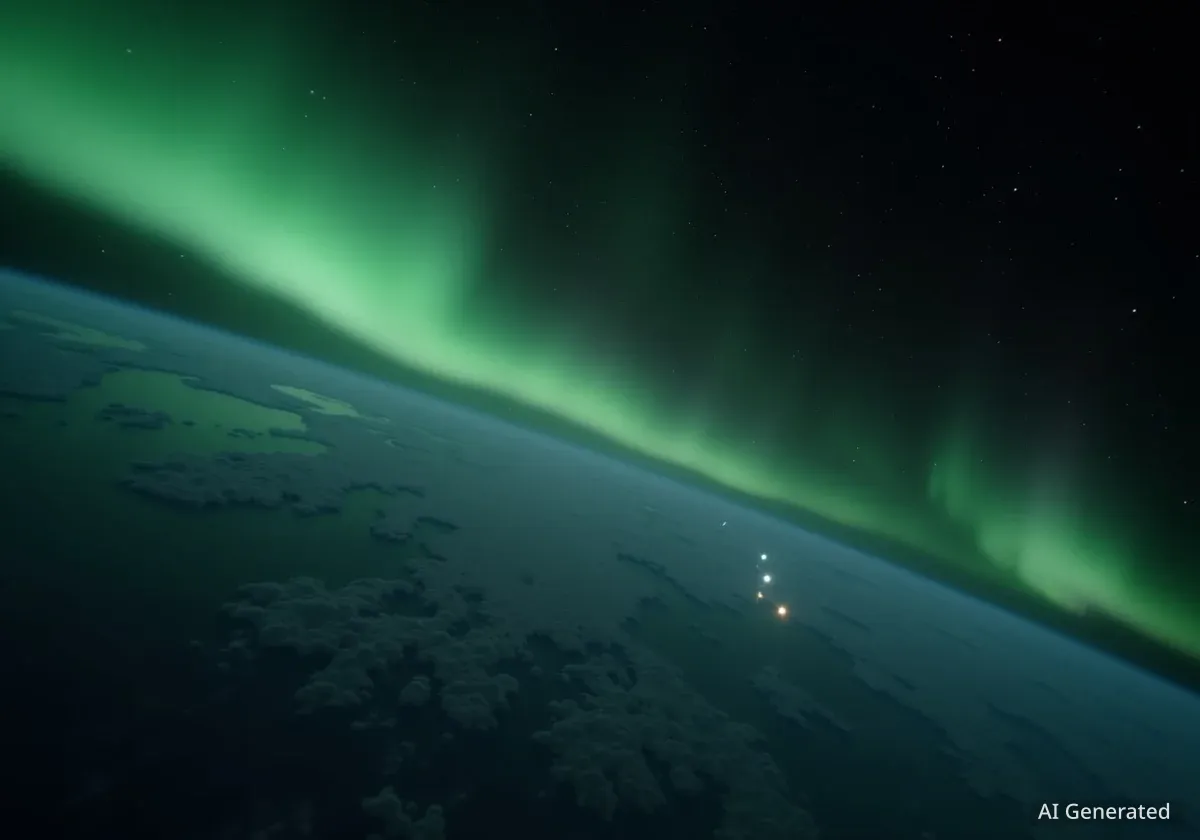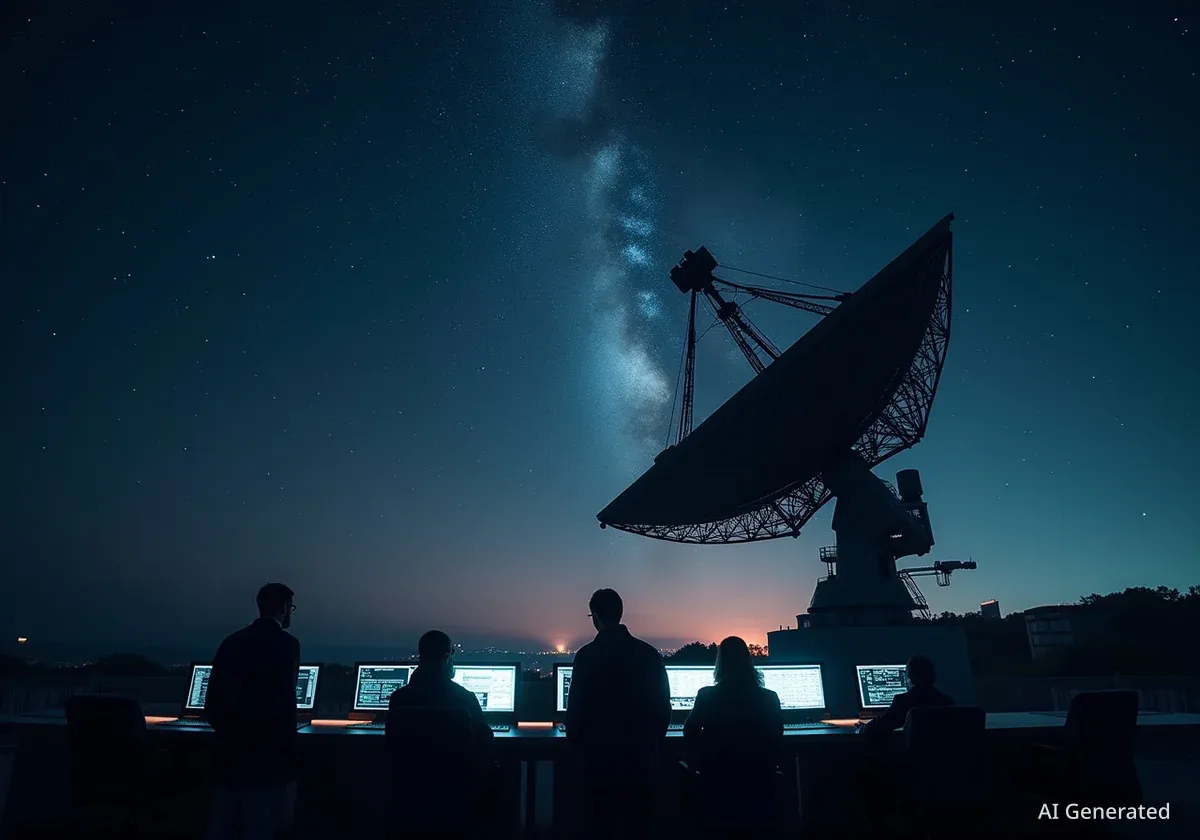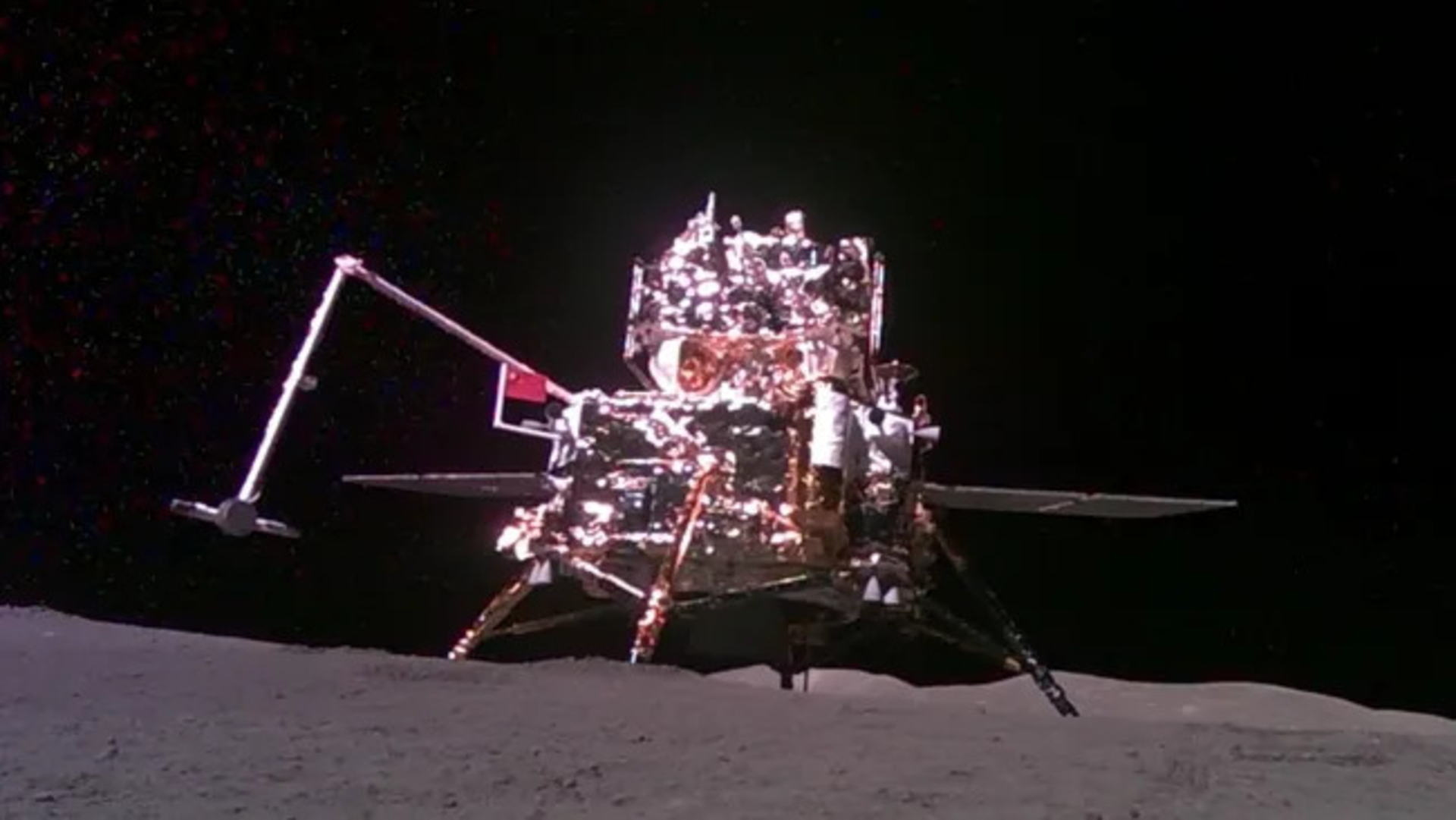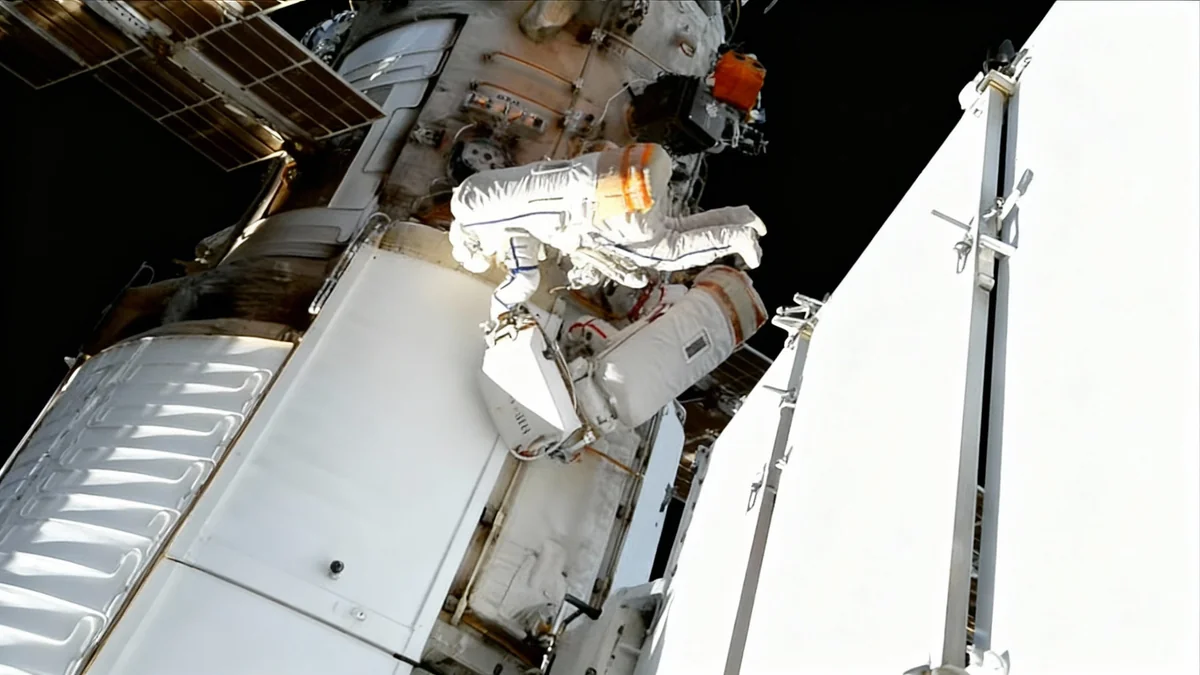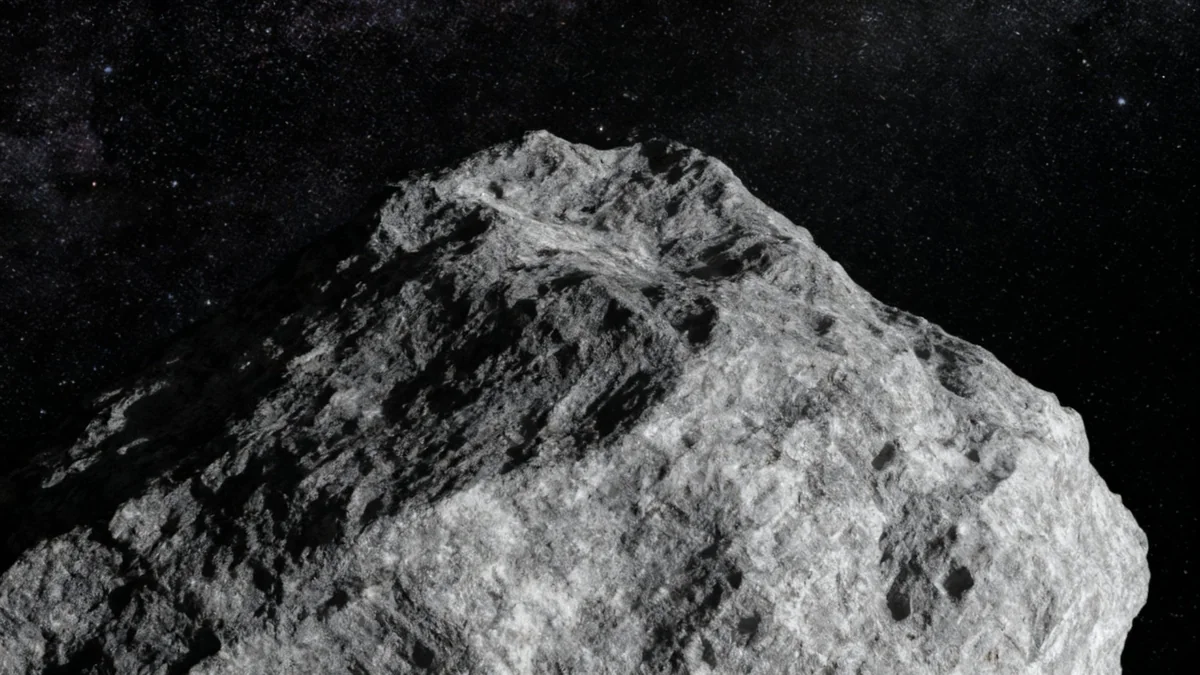NASA astronaut Don Pettit has released remarkable video footage from the International Space Station (ISS) showing a train of SpaceX Starlink satellites reflecting sunlight as they passed over a vibrant green aurora. The video, shared on social media, provides a unique perspective on the growing satellite constellation from low Earth orbit.
Pettit, a veteran astronaut and photographer, noted the satellites were exceptionally bright, with many appearing as luminous as the planet Jupiter in the night sky. The footage has drawn attention to both the visual spectacle of satellite megaconstellations and the ongoing discussions within the scientific community about their impact on astronomical observations.
Key Takeaways
- NASA astronaut Don Pettit captured video of a SpaceX Starlink satellite train from the International Space Station.
- The satellites were observed glowing brightly above a green aurora, with Pettit comparing their brightness to that of Jupiter.
- The footage was taken during Pettit's recent 220-day mission, which concluded in April.
- The event highlights concerns from astronomers regarding light pollution from the growing number of low Earth orbit satellites.
- SpaceX currently operates nearly 8,600 Starlink satellites and has plans to launch tens of thousands more.
A View from the International Space Station
The video was captured by Don Pettit during his recent 220-day mission aboard the ISS. He posted the undated footage to his X account on October 7, 2025, as part of a series of images and videos he has been sharing since his return to Earth. His mission concluded on his 70th birthday, April 20, with a landing in Kazakhstan via a Russian Soyuz spacecraft.
In his social media post, Pettit described the Starlink train as "very visible" against the backdrop of the aurora. The natural light display of the aurora is created when charged particles from the sun interact with gases in Earth's upper atmosphere. Despite this significant natural light source, the satellites stood out clearly.
"Many were as bright as Jupiter — they would flash from one to 10 seconds," Pettit commented, describing the intensity of the light reflected by the satellites.
This observation underscores the high reflectivity of the satellites, a key point of discussion among astronomers and space watchers.
Understanding Satellite Brightness
The comparison to Jupiter provides a concrete measure of the satellites' visibility. Jupiter is one of the brightest objects in the night sky, reaching a peak apparent magnitude of approximately -2. The astronomical magnitude scale is inverted, meaning lower numbers signify brighter objects.
Brightness by the Numbers
- The Sun: Magnitude -26
- Venus (at its brightest): Magnitude -4
- Jupiter (at its brightest): Magnitude -2
- Brightest Stars: Magnitude 2 to -2
Pettit's observation places the flashing Starlink satellites among the most luminous objects observable in the night sky, rivaling major planets and the brightest stars.
This level of brightness is most pronounced shortly after a new batch of Starlink satellites is launched. They travel in a tight formation, or "train," before gradually moving to their final operational orbits. During this phase, their flat surfaces can catch the sunlight, creating bright flares visible from both the ground and orbit.
The Growing Starlink Constellation
SpaceX's Starlink project is designed to provide high-speed internet service to underserved and remote areas around the globe. To achieve this, the company is building a massive constellation of satellites in low Earth orbit.
Starlink Constellation Status
According to data tracked by space debris expert Jonathan McDowell, the Starlink network currently consists of nearly 8,600 operational satellites. SpaceX has regulatory approval to launch many more, with long-term plans for a megaconstellation that could include up to 42,000 satellites.
While the service offers significant benefits for global connectivity, the sheer number of satellites has raised concerns within the scientific community. The primary issues include light pollution, the risk of orbital collisions, and potential atmospheric effects upon reentry.
Impact on Astronomy
The brightness observed by Pettit is a central concern for astronomers. Bright satellite trails can streak across long-exposure images taken by ground-based telescopes, corrupting scientific data and interfering with observations of distant stars and galaxies.
In response to these concerns, SpaceX has implemented design changes to reduce the reflectivity of its newer satellites. These modifications include using darker materials and adding sun visors to block sunlight from reaching the most reflective parts of the satellite. The company also states that its satellites are equipped with autonomous collision avoidance systems to mitigate the risk of space debris.
Atmospheric and Debris Concerns
Beyond astronomy, scientists are studying the potential long-term effects of such a large number of satellites. One area of research involves the reentry phase at the end of a satellite's life. As they burn up in the atmosphere, they release small amounts of metals and other materials.
Researchers are investigating whether this accumulation of materials could have unintended consequences for the atmospheric chemistry or Earth's climate over time. Furthermore, the increasing population of satellites in orbit raises the statistical probability of collisions, which could generate more hazardous space debris.
Pettit's video serves as a powerful visual reminder of the rapidly changing environment in low Earth orbit. As companies continue to launch large satellite constellations, the balance between technological progress and the preservation of the space environment remains a critical topic of international discussion.

